Factions in the Democratic Party (United States)
The Democratic Party of the United States is composed of various factions with some overlap and enough agreement between them to coexist in one party.
Ideological wings
Centrist wing
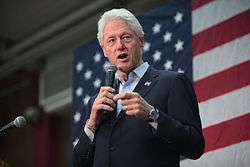
During the 1968 United States presidential election, moderate pro-war candidate Hubert Humphrey took the Democratic presidential nomination over the winner of the popular vote, anti-war progressive Eugene McCarthy.
In December 1972, the Coalition for a Democratic Majority, a centrist faction within the Democratic Party, was created after the landslide victory of Republican Richard Nixon over anti-war progressive Democrat George McGovern in the 1972 presidential election. The presidency of Jimmy Carter led to a right-wing shift in the Democratic Party. From Franklin D. Roosevelt to Richard Nixon, there was a bipartisan support for maintaining social liberal programs created as part of FDR's New Deal. The Carter administration was the first to begin deregulating and neo-liberalizing the United States economic system.
In 1985, the Democratic Leadership Council, a centrist faction within the party, was created after the landslide victory of Republican Ronald Reagan over moderate Democrat Walter Mondale at the 1984 presidential election.
During the 1992 United States presidential election, Bill Clinton and Al Gore, both members of the Democratic Leadership Council, both ran as New Democrats, running as centrist Democrats for more limited government. On social issues, Clinton signed the Violent Crime Control and Law Enforcement Act of 1994. On LGBT rights, although coming out strongly in 1993 for open military service for LGBT Americans, Clinton settled on the compromise Don't ask, don't tell policy (signed the Defense of Marriage Act into law) and signed Executive Order 12968 and 13087.
The 2004 Democratic Party presidential primaries and caucuses was largely a three-way fight between John Kerry, member of the New Democrat Coalition, John Edwards (also a member of the New Democrat Coalition) and Howard Dean, founder of the progressive Democracy for America.
The Blue Dog Coalition includes conservatives, along with some centrists.
Conservative wing


From the 1860s to the 1940s, conservative Democrats came to mean opposition to the Radical Republicans who wanted to grant full citizenship rights to freed slaves and take political power away from the ex-Confederates. In the 1940s, the Democratic Party began to advocate against segregation.
The conservative coalition was an unofficial coalition in the United States Congress bringing together a conservative majority of the Republican Party and the conservative, mostly Southern wing of the Democratic Party. It was dominant in Congress from 1937-1963 and remained a political force until the mid-1980s, eventually dying out in the 1990s. In terms of Congressional roll call votes, it primarily appeared on votes affecting labor unions. The conservative coalition did not operate on civil rights bills, for the two wings had opposing viewpoints.[1] However, the coalition did have the power to prevent unwanted bills from even coming to a vote. The coalition included many committee chairmen from the South who blocked bills by not reporting them from their committees. Furthermore, Howard W. Smith, Chairman of the House Rules Committee, often could kill a bill simply by not reporting it out with a favorable rule and he lost some of that power in 1961.[2] The conservative coalition was not concerned with foreign policy as most of the Southern Democrats were internationalists, a position opposed by most Republicans.
Today, conservative Democrats are generally regarded as members of the Democratic Party who are more conservative than the national political party as a whole. Conservative Democrats vary greatly in ideology. Some are fiscally conservative and socially liberal Democrats while some are fiscally conservative and socially moderate Democrats. On foreign policy, conservative Democrats are generally liberal internationalists.
Liberal wing
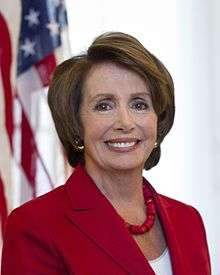
Modern liberalism in the Democratic Party began during the Progressive era. From 1900-1920, liberals called themselves progressives and rallied behind Democrats such as William Jennings Bryan and Woodrow Wilson to fight corruption, waste and big trusts. The Wilson administration saw the enactment of the New Freedom, progressive social programs enacted from 1913–16, when the Democrats controlled Congress. The rise of the women's suffrage movement saw the passage of the Nineteenth Amendment to the United States Constitution and a push for civil rights legislation on the basis of gender. The first modern self-described liberal Democratic President was Franklin D. Roosevelt, who enacted the New Deal, a series of social liberal programs enacted in the United States between 1933–38 and a few that came later. From the 1940s onwards, liberal Democrats began pushing for desegregation and civil rights legislation for racial minorities. Starting in the 1960s, liberal Democrats began pushing for immigration reform and gun control. During the Cold War, the liberal Democratic movement became anti-communist.
In the 1970s, liberal Democrats began pushing for civil rights for disabled people, consumer protection, environmentalism, LGBT rights, reproductive rights and the end to capital punishment. The election of President Jimmy Carter in 1976 marked the end of the bipartisan support from Presidents Franklin D. Roosevelt to Richard Nixon to the New Deal programs and marked the beginning of support among Presidents for more neoliberal economic policies. The key legislative achievement of the Obama administration, the passage and enactment of the Patient Protection and Affordable Care Act, was generally supported among liberal Democrats, but criticized by some for not going far enough. On social progressivism, liberal Democrats achieved expansion of LGBT rights, federal hate crime laws, rescinding the Mexico City Policy, later reinstituted by President Donald Trump, rescinding the ban on federal taxpayer dollars to fund research on embryonic stem cells, Joint Comprehensive Plan of Action and the United States–Cuban Thaw. In the 2010s, Democratic liberals began pushing for the legalization of cannabis, succeeding in several states. President Barack Obama, who opposed cannabis legalization despite being a former smoker himself, did not crack down on states that did legalize cannabis during his presidency.
Today, liberal Democrats are generally regarded as being socially progressive. On economic issues, liberal Democrats vary, with some supporting neoliberal economics while others support Keynesian economics or a mixed economic system. On foreign policy, there is also a divide among liberal Democrats, with some being liberal internationalists while other are less in favor of interventionism.
The presidency of Obama was comparatively further to the left than Bill Clinton's. In 2011, the Democratic Leadership Council, which supported more centrist and Third Way positions, was dissolved. Obama has opposed tax reform, the Keystone XL Pipeline and signed the Patient Protection and Affordable Care Act into law.
A 2015 Gallup annual average based on January though December 2015 as part of Gallup's monthly Gallup Poll Social Series surveys found a record 45% of Democrats identify as liberals—a rise from 29% in 2000.[3] A 2015 Public Religion Research Institute found 82% of liberal Democrats opposed legally permitting small business owners to discriminate by refusing products and services to gay and lesbian people; including on the basis of their religious beliefs, while 15% supported allowing this and 3% did not know or refused to answer.[4] A March 2015 Pew Research Center poll found 75% of liberal Democrats believed cannabis should be legal while 22% were opposed and 3% did not know.[5] A March 2016 Pew Research Center poll found 84% of liberal Democrats support same-sex marriage while 12% oppose same-sex marriage and 87% believe homosexuality should be accepted by society while 8% believe it should be discouraged.[6] A May 2016 Gallup poll found that more Democrats identified as liberal on social issues (57%) than liberal on economic issues (41%). The 57% of Democrats who currently say they are liberal on social issues is up from 35% in 2001.[7]
Libertarian wing
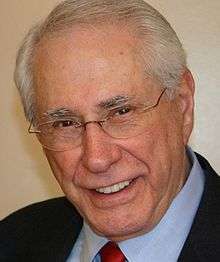
Civil liberties advocates and people against national debt also often support the Democratic Party because its positions on such issues as civil rights and separation of church and state are more closely aligned to their own than the positions of the Republican Party and because the Democrats' economic agenda may be more appealing to them than that of the Libertarian Party.[8]
Civil libertarians oppose gun control, the "War on Drugs", protectionism, corporate welfare, governmental borrowing and an interventionist foreign policy. Some civil libertarians also support the party because of their support of habeas corpus for unlawful combatants, opposition to torture of suspected terrorists, extraordinary rendtition, warrantless wiretapping, indefinite detention without trial or charge, the Patriot Act, the Guantanamo Bay Naval Base and what they see as the erosion of the protections of the Bill of Rights.[9][10]
In the 2010s, following the revelations about National Security Agency (NSA) surveillance in 2013 and the advent of online decentralization and cryptocurrencies like Bitcoin, Democratic lawmakers such as Senators Ron Wyden, Kirsten Gilibrand and Cory Booker and Representative Jared Polis have worked alongside libertarian Republicans like Senator Rand Paul and Representative Justin Amash, earning plaudits from such traditional libertarian sources as Reason.[11][12][13][14] The growing political power of Silicon Valley, a longtime Democratic stronghold that is friendly to economic deregulation and strong civil liberties protections while maintaining traditionally liberal views on social issues, has also had a serious impact on the increasingly libertarian leanings of young Democrats.[15][16][17]
The Democratic Freedom Caucus (DFC) is an organized group of this faction, although it prefers to use terms such as "freedom Democrats" or "freedom-oriented Democrats". The DFC does not use the term "libertarian" on its website because while it advocates individual liberty and limited government power, it considers its economic policies to be more progressive than for example, the Libertarian Party. This is especially so because the DFC is in the tradition which holds that land and natural resources are subject to fundamentally different economic laws than human-made products (such as machinery, buildings and the likes), so its view of economic freedom advocates somewhat different economic policies. Specifically, the DFC advocates in its platform a tax shift away from things like labor (and the products thereof) and sales and towards spatial-locations and natural resources.[18]
Another group, the Libertarian Democratic Caucus (LDC) seeks to build libertarian coalitions on issues regardless of political party. The Democratic Freedom Caucus tends to focus on taxation while the LDC targets civil liberty issues such as legalizing victimless crimes. The LDC is a Democratic organization, but it advocates working with the Libertarian Party and libertarian Republicans, such as the Libertarian Republican Caucus, on issues they have in common.[19]
Progressive wing

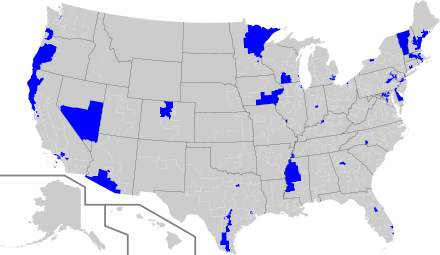
Today, progressive Democrats are generally regarded as social progressives on social issues. On economic issues, progressive Democrats generally promote Keynesian economics or a mixed economic system. The Congressional Progressive Caucus (CPC) is a caucus of progressive House Democrats, along with one independent in the Senate, in the Congress. It is the single largest Democratic caucus in the House of Representatives and its members have included Congressmen Dennis Kucinich (OH), Alan Grayson (FL), John Conyers (MI), Barbara Lee (CA), Jim McDermott (WA) and John Lewis (GA).[20]
Many progressive Democrats are ideological descendants of the New Left of Democratic presidential candidate and Senator George McGovern of South Dakota, while others were involved in the presidential candidacies of Vermont Governor Howard Dean and U.S. Representative Dennis Kucinich of Ohio and still others are dissatisfied former members of the Green Party. This group consists disproportionately of college-educated professionals.[21] A recent study by the Pew Research Center found that a plurality (41%) resided in mass affluent households and 49% were college graduates.[22]
Progressive Democratic candidates for public office have had popular support as candidates in metropolitan areas outside the South, and among African-Americans nationwide. Senators Paul Wellstone (MN),[23] Elizabeth Warren (MA),[24] and Sherrod Brown (OH) have been described as progressive. Other famous progressives include Henry A. Wallace,[25] Eugene McCarthy and Ted Kennedy.[26]
The 2016 Democratic Party presidential primaries and caucuses between Hillary Clinton and Bernie Sanders was largely a fight along ideological lines between the liberals and progressives. Clinton, who referred to herself as a "progressive who gets things done", received substantial support from African Americans, older Americans, women, LGBT Americans, Latino Americans and Jewish Americans; Sanders, a member of the Congressional Progressive Caucus, instead received an overwhelming majority of support from Millennials across the board. During the run-up to polling day, Clinton campaigned to appeal to moderate Republicans due to their rejection of the Republican candidate Donald Trump, backed by the ultra-conservative alt-right movement. One key area that Clinton ran to the left of Sanders on was gun control, with Clinton having a staunchly pro-gun control voting record in Congress while Sanders has been in favor of gun control, but he has not always voted for pro-gun control positions.
In 2016, the Blue Collar Caucus, a pro-labor, anti-outsourcing Caucus was formed,[27][28][29][30] with significant overlap in members with the Progressive Caucus, although some moderates such as Dan Lipinski are members as well.
Social democratic and democratic socialist wings
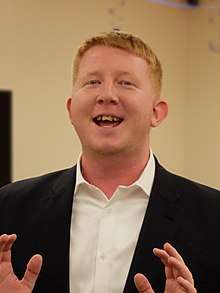
In electoral politics, the Social Democrats, USA (SDUSA) National Co-Chairman Bayard Rustin stated in 1974 that the goal of SDUSA was to transform the Democratic Party into a social democratic party.[31] Since the Great Recession, Occupy Wall Street and the Bernie Sanders' presidential campaign in 2016, support for democratic socialism and social democracy in the Democratic Party has increased. During the 2017 United States elections, eight more members of the Democratic Socialists of America (DSA) were elected to public office as Democrats on top of the twenty already serving.[32]
Voter base
A large portion of the Democratic voting base are ethnic minorities. The Democrats' positions on affirmative action and civil rights, the economy and immigration have attracted many minorities to the party.
African Americans
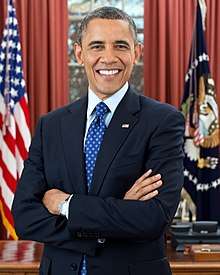
Originally, the Republican Party was favored by African Americans after the end of the civil war and emancipation of black slaves. This trend started to gradually change in the 1930s, with Franklin D. Roosevelt's New Deal programs that gave economic relief to all minorities including African Americans and Hispanics. Support for the civil rights movement in the 1960s by Democratic Presidents John F. Kennedy and Lyndon B. Johnson helped give the Democrats even larger support among the African American community, although their position also alienated the Southern white population. Today, African Americans have as strong support for the Democratic Party as any group has for either party, voting 90% Democratic in the 2000 presidential election,[33] 88% Democratic in the 2004 presidential election[34] and 94% Democratic in the 2008 presidential election.[35]
18–29 year old African Americans
| Year | Branch | % of 18–29 year old Black/African American Democratic vote | |
|---|---|---|---|
| 2008[65] | United States House of Representatives | 94 | |
| 2008[35] | United States Presidency | 95 | |
| 2012[61] | United States Presidency | 91 | |
| 2014[66] | United States House of Representatives | 88 | |
| 2016[63] | United States Presidency | 83 | |
| 2016[64] | United States House of Representatives | 83 | |
30–44 year old African Americans
| Year | Branch | % of 39–44 year old Black/African American Democratic vote | |
|---|---|---|---|
| 2008[65] | United States House of Representatives | 94 | |
| 2008[35] | United States Presidency | 96 | |
| 2012[61] | United States Presidency | 94 | |
| 2014[66] | United States House of Representatives | 86 | |
| 2016[63] | United States Presidency | 87 | |
| 2016[64] | United States House of Representatives | 90 | |
45–64 year old African Americans
| Year | Branch | % of 45–64 year old Black/African American Democratic vote | |
|---|---|---|---|
| 2008[65] | United States House of Representatives | 93 | |
| 2008[35] | United States Presidency | 96 | |
| 2012[61] | United States Presidency | 93 | |
| 2014[66] | United States House of Representatives | 90 | |
| 2016[63] | United States Presidency | 90 | |
| 2016[64] | United States House of Representatives | 89 | |
Over 65 years old African Americans
| Year | Branch | % of over 65 years old Black/African American Democratic vote | |
|---|---|---|---|
| 2008[65] | United States House of Representatives | 91 | |
| 2008[35] | United States Presidency | 94 | |
| 2012[61] | United States Presidency | 92 | |
| 2014[66] | United States House of Representatives | 93 | |
| 2016[63] | United States Presidency | 90 | |
| 2016[64] | United States House of Representatives | 89 | |
Age
18–29 year old Americans
30–44 year old Americans
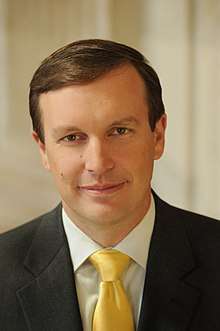
Asian Americans

The Democratic Party also has considerable support in the small yet growing Asian American population. The Asian American population had been a stronghold of the Republican Party until the United States presidential election of 1992 in which George H. W. Bush won 55% of the Asian American vote, compared to Bill Clinton winning 31% and Ross Perot winning 15% of the Asian vote. Originally, the vast majority of Asian Americans consisted of strongly anti-communist, pro-democracy Vietnamese refugees, Chinese Americans, Taiwanese Americans, Korean Americans and socially conservative Filipinos who fled Ferdinand Marcos in the 1960s through the 1980s. The Republican Party's socially conservative, fervently anti-communist position strongly resonated with this original demographic. The Democratic Party made gains among the Asian American population starting in 1996 and in 2006 won 62% of the Asian American vote. Exit polls after the 2008 presidential election indicated that Democratic candidate Barack Obama won 62% of the Asian American vote nationwide.[67] In the 2012 presidential election, 73% of the Asian American electorate voted for Obama's re-election.[68]
According to a survey taken by the Times of India, Obama had the support of 85% of Indian Americans, 68% of Chinese Americans and 57% of Filipino Americans in 2012.[69] The Asian American community's increasing number of young voters has also helped to erode traditionally reliably Republican voting blocs such as Vietnamese and Filipino Americans, leading to an increase in support for Democrats. Prominent Asian American Democrats include Senators Mazie Hirono and Tammy Duckworth, former Senators Daniel Inouye and Daniel Akaka, former Governor and Secretary of Commerce Gary Locke and Representatives Mike Honda, Judy Chu, Doris Matsui and Norman Mineta.
Christian left
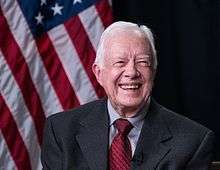
The Christian left shares many policy goals with Democratic Party, although the movement is arguably smaller and less influential on the party when compared to the Christian right, which is generally more affiliated with the Republican Party.
Christian left includes Peace churches, elements of Protestant mainline churches, elements of Roman Catholicism and some parts of the evangelical community. Their concerns regarding social justice, welfare, universal health care, education and foreign aid are more in line with the Democratic economic agenda than the laissez-faire economic approach of the Republicans. Their social views of capital punishment, defense and militarism, civil rights and equality are also left-wing. On moral issues such as abortion, euthanasia and homosexuality, the Christian left are often—although not always—more in line with Democrats. They may either disagree with Biblical literalism on these issues or may hold opposition, but choose to prioritize social justice and other issues over social issues.
Prominent Christian left Democrats include Jesse Jackson (a Democratic presidential candidate in 1984 and 1988) and Al Sharpton (a Democratic presidential candidate in 2004).
Education

Non-high school graduates
Postgraduate education
Hispanic Americans
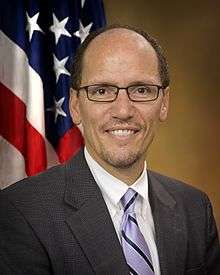
The Hispanic American population, particularly the large Mexican American population in the Southwest and large Puerto Rican, Dominican and South American populations in the Northeast have been strongholds for the Democratic Party. Hispanic Democrats commonly favor liberal views on immigration, which supersedes in priority over the socially conservative views that many Hispanics hold. In 1996 presidential election, Democratic President Bill Clinton received 72% of the Hispanic vote.
After a period of incremental gains under George W. Bush, the Republican Party's support among Hispanics seriously eroded after a heated and acrimonious debate within the party during the 109th Congress over immigration reform. Nationwide protests helped galvanize Hispanic political participation and in the 2006 mid-term elections Democrats increased their share the Hispanic vote from 2004 by 14 points to 69%.[73] The trend continued in 2008 as Barack Obama carried the Latino vote with 67%.[35] Obama expanded his share of the Latino vote to 71% in the 2012 presidential election.
Income
Families with income that is less than $30,000
| Year | Branch | % of Democratic vote among families with income that is less than $30,000 | |
|---|---|---|---|
| 1992[45] | United States House of Representatives | 61 | |
| 1994[47] | United States House of Representatives | 55 | |
| 1996[48] | United States House of Representatives | 58 | |
| 1998[50] | United States House of Representatives | 56 | |
| 2000[51] | United States House of Representatives | 58 | |
| 2002[53] | United States House of Representatives | 60 | |
| 2004[54] | United States House of Representatives | 62 | |
| 2006[56] | United States House of Representatives | 65 | |
| 2008[57] | United States House of Representatives | 68 | |
| 2010[59] | United States House of Representatives | 57 | |
| 2012[60] | United States House of Representatives | 64 | |
| 2014[62] | United States House of Representatives | 60 | |
| 2016[63] | United States Presidency | 53 | |
| 2016[64] | United States House of Representatives | 57 | |
Families with income that is between $30,000–49,999
Irreligious Americans
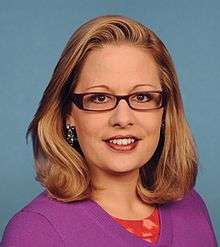
The Democratic Party receives support from secular organizations such as the Secular Coalition for America[74] and many agnostic and atheist Americans. Exit polls from the 2008 election showed that although a religious affiliation of "none" accounted for 12% of the electorate, they overwhelmingly voted for Obama by a 75–25% margin.[75] In his inaugural address, Obama acknowledged atheists by saying that the United States is not just "Christians and Muslims, Jews and Hindus but non-believers as well".[76] In the 2012 election cycle, Obama has moderate to high rankings with the Secular Coalition for America, whereas the majority of the Republican candidates have ratings in the low-to-failing range.[77]
An October 2012 American Values Survey found that among unaffiliated American likely voters, 23% of unaffiliated American likely voters made up Obama's religious coalition of supporters, the largest share of the coalition.[78]
A Pew Research Center survey conducted between January to June 2016 found 28% of Democratic and Democratic-leaning registered voters were religiously unaffiliated. A Pew Research Center survey conducted in June 2016 found 67% of religious nones supported Hillary Clinton for President, 23% supported Donald Trump and 10% answered other/do not know/or refused to answer.[79]
| Year | Branch | % of Democratic vote who self identify their religion as "None" | |
|---|---|---|---|
| 1996[80] | United States Presidency | 59 | |
| 2000[81] | United States Presidency | 61 | |
| 2004[82] | United States House of Representatives | 65 | |
| 2004[55] | United States Presidency | 67 | |
| 2006[83] | United States House of Representatives | 74 | |
| 2008[84] | United States House of Representatives | 72 | |
| 2008[71] | United States Presidency | 75 | |
| 2012[85] | United States House of Representatives | 71 | |
| 2012[61] | United States Presidency | 70 | |
| 2014[66] | United States House of Representatives | 69 | |
| 2016[63] | United States Presidency | 68 | |
| 2016[64] | United States House of Representatives | 72 | |
Atheist and agnostic Americans
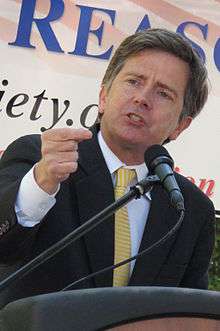
An October 2012 American Values Survey found that among atheist and agnostic American voters, 51% identified politically independent, 39% Democratic, 9% Republican and 1% other. It also found that atheist and agnostic American voters identify 57% liberal and 81% supported Barack Obama in the 2012 presidential election.[78]
Jewish Americans
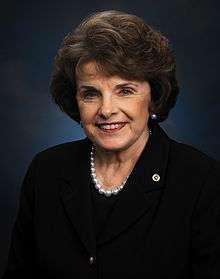
Jewish Americans communities tend to be a stronghold for the Democratic Party, with more than 70% of Jewish voters having cast their ballots for the Democrats in the 2004 through 2012 presidential elections. Of the 29 Jewish Senators and Congressmen currently serving in Congress, 27 are Democrats.[86] It should be noted that among American Jews are people who consider themselves religious believers of one denomination or another, agnostic and/or atheists and people who are explicitly or implicitly secular.
Labor
Since the 1930s, a critical component of the Democratic Party coalition has been organized labor. Labor unions supply a great deal of the money, grass roots political organization and voting base of support for the party. Union membership in the United States has declined from an all-time high in 1954 of 35% to a low of 11% in 2015. After the 1968 Democratic National Convention, the McGovern–Fraser Commission set up the modern system of primaries. It also removed organized labor from its structural position of power in the Democratic Party and opened it up democratically to the voters. This saw a massive decline in the power of organized labor within the Democratic Party.
| Year | Branch | % of Democratic vote among union members | |
|---|---|---|---|
| 2000[72] | United States Presidency | 62 | |
| 2004[82] | United States House of Representatives | 65 | |
| 2004[55] | United States Presidency | 61 | |
| 2006[83] | United States House of Representatives | 68 | |
| 2008[90] | United States House of Representatives | 65 | |
| 2008[91] | United States Presidency | 60 | |
LGBT Americans
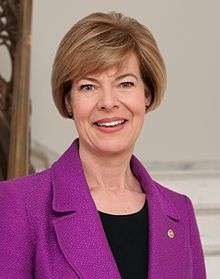
Since the 1970s, LGBT Americans have become a key core consistency within the Democratic Party. In 1971, the Alice B. Toklas Memorial Democratic Club of San Francisco was formed as the first registered political action committee for LGBT Democrats in the nation. The 1972 Democratic National Convention saw the first speaking slots for LGBT people at a Democratic National Convention, along with votes and rejecting LGBT rights plank to the Democratic Party platform. The presidency of Jimmy Carter was the first presidency that addressed LGBT rights, but did very little to address LGBT rights as President. In the 1980 Democratic Party presidential primaries, in response to Carter not doing enough for LGBT rights and not supporting an LGBT plank in the Democratic Party, Ted Kennedy courted to LGBT voters, supporting adding an LGBT plank to the Democratic Party. LGBT voters voted for Kennedy during the primary, helping him win the California primary and lead to the first LGBT plank to the Democratic Party. During the 1988 United States presidential election, Michael Dukakis was overtly homophobic, leading to many LGBT voters to boo him during a meeting Dukakis had with LGBT groups. Polling showed that George H. W. Bush won 35–40% of the LGBT vote during the 1988 presidential election.
Both Presidents Bill Clinton and Barack Obama heavily targeted LGBT voters. Exit polling going back to 1990 to the present show that LGBT voters overwhelming prefer the Democratic Party over the Republican Party. On average, about 72.5% of LGBT voters voted Democratic in exit polling for the presidential elections dating from 1992 to the present. On average, about 74.42% of LGBT voters voted Democratic in exit polling for House of Representatives elections dating from 1990 to the present. In the 2012 election exit polls, Obama won 76% of LGBT voters. In the 2016 election polls, Hillary Clinton won 78% of LGBT voters.
| Poll source | Date administered |
Sample size |
Hillary Clinton |
Barack Obama |
John Edwards |
Dennis Kucinich |
Bill Richardson |
Chris Dodd |
Joe Biden |
Refused |
|---|---|---|---|---|---|---|---|---|---|---|
| Hunter College | November 15–26, 2007 | 501 | 62.8% | 22.3% | 6.5% | 4.5% | 1.2% | 1.1% | 1.0% | 0.6% |
| Poll source | Date administered |
Sample size |
Hillary Clinton |
Bernie Sanders |
Undecided | Other |
|---|---|---|---|---|---|---|
| SCRUFF | February 2016 | 10,510 | 62.5% | 31.0% | 5.9% | 0.6% |
| Year | Branch | % of LGBT Democratic vote | |
|---|---|---|---|
| 2016[63] | United States Presidency | 78 | |
| 2016[64] | United States House of Representatives | 79 | |
- Transgender Americans
_(cropped).jpg)
At the 2000 Democratic National Convention, Jane Fee of Minnesota was the first transgender delegate to a Democratic National Convention. The 2008 national Democratic Party platform for the first time included "gender identity" in the party platform, the first explicit inclusion of transgender people in the national Democratic Party platform. In 2009, the Democratic National Committee (DNC) added gender identity to the DNC's non-discrimination policy and DNC Chair Tim Kaine appointed Barbra Casbar Siperstein the first openly transgender member of the DNC. In 2010, President Obama became the first president to appoint an openly transgender person to political positions in the United States federal government. In 2012, Trans United for Obama, the first partisan transgender issues group was formed to reelect President Barack Obama.[92] During the 2015 State of the Union Address, President Obama became the first U.S. president ever to use the term "transgender".[93] At the 2016 Democratic National Convention, Sarah McBride became the first openly transgender person to address a Democratic National Convention.[94] A 2015 United States Transgender Survey found 50% of transgender Americans identified as Democrats, 48% as independents, including 4% socialist or democratic socialist, 2% Republicans and Green Party and 1% Libertarian and anarchist. Of the sample that is independent, 79% reported that they were Democrats or lean towards the Democratic Party, 4% were Republicans or lean towards the Republican Party and 17% were independents who do not lean Democratic or Republican parties. When asked about their political views, 55% described themselves as very liberal, 27% liberal, 15% moderate, 2% conservative and 1% very conservative.[95]
Liberals
Marital status
Unmarried
Moderates
Muslim Americans
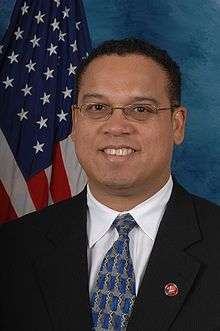
Muslims make up about 0.6% of Americans and in the 2008 election, 89% of Muslim Americans voted for Barack Obama.[96] Muslim Americans tend to be financially well off as many in the community are small businessmen and educated professionals. They also tend to be socially conservative, but the younger generation of Muslim Americans tend to be more accepting in social liberal issues.[97] However, after the September 11 attacks many experienced hostility and discrimination[98] and many right-wing religious and political leaders attacked Islam as both a violent religion and a threat to American values.[99][100] Furthermore, most Muslim Americans opposed the Iraq War, solidifying their shift to the Democratic Party.[101] Islamic convert Keith Ellison was elected as the first Muslim Congressman in 2006. He was elected as Democrats' Representative for Minnesota's 5th congressional district.
| Year | Branch | % of Muslim American Democratic voters | |
|---|---|---|---|
| 2004[102] | United States Presidency | 93 | |
| 2008[103] | United States Presidency | 85 | |
| 2012[104] | United States Presidency | 85 | |
| 2016[105] | United States Presidency | 74 | |
Native Americans
The Democratic Party also has strong support among the Native American population, particularly in Arizona, New Mexico, Montana, North Dakota, South Dakota, Washington, Alaska, Idaho, Minnesota, Wisconsin, Oklahoma[106] and North Carolina. Though now a small percentage of the population (virtually non-existent in some regions), most Native American precincts vote Democratic in margins exceeded only by African Americans.[107]
Modern-day Democratic Native American politicians include former Congressman Brad Carson of Oklahoma and Lieutenant Governor Byron Mallott of Alaska as well as Principal Chief Bill John Baker of the Cherokee Nation and Governor Bill Anoatubby of the Chickasaw Nation.
Region
Northeast
West
Registered Democrats
Women
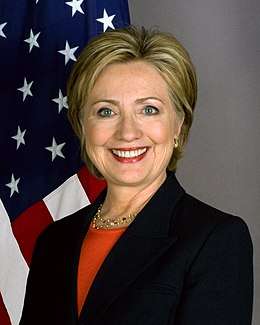
Working class
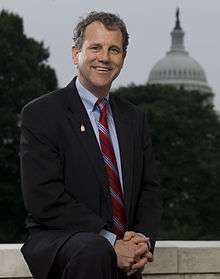
While the American working class has lost much of its political strength with the decline of labor unions,[108] it remains a stronghold of the Democratic Party and continues as an essential part of the Democratic base. Today, roughly a third of the American public is estimated to be working class with around 52% being either members of the working or lower classes.[109][110] Yet as those with lower socioeconomic status are less likely to vote, the working and lower classes are underrepresented in the electorate. The working class is largely distinguished by highly routinized and closely supervised work. It consists mainly of clerical and blue-collar workers.[109] Even though most in the working class are able to afford an adequate standard of living, high economic insecurity and possible personal benefit from an extended social safety net make the majority of working-class people left-of-center on economic issues. However, most working class Democrats differ from most liberals in their more socially conservative views. Working class Democrats tend to be more religious and likely to belong to an ethnic minority. White working class Democrats are more in favor of gun rights and oppose affirmative action programs while non-white working class Democrats are more in favor of gun control measures and support affirmative action programs. Socially conservative and disadvantaged Democrats are among the least educated and lowest earning ideological demographics. In 2005, only 15% had a college degree, compared to 27% at the national average and 49% of liberals, respectively. Together socially conservative and the financially disadvantaged comprised roughly 54% of the Democratic base.[111] The continued importance of the working class votes manifests itself in recent CNN exit polls, which shows that the majority of those with low incomes and little education vote for the Democratic Party.[112][113][113][114][114]
However, since at least 1980[115] there has been a noticeable decline in support for the Democratic Party among white working class voters.[116][117][118][119][120][121] In the 2008 presidential election, Barack Obama carried 40% of white voters without college degrees to John McCain carrying 58%.[122] In the 2010 midterms, Democratic candidates for the House of Representatives only carried 33% of the white working class vote compared to 63% for the Republican candidates.[123] In the 2012 presidential election, Obama carried 36% of white working class voters to Mitt Romney carrying 61%.[124] In the 2014 midterms, Democratic candidates for the House of Representatives carried 34% of the white working class vote compared to 64% for the Republican candidates.[125] In the 2016 presidential election, Hillary Clinton only carried 28% of white working class voters to Donald Trump carrying 67%.[126][127][128]
See also
- Political positions of the Democratic Party
- Democratic Party (United States) organizations
- Unofficial organizations for Democrats
- Republican Party
- Libertarian Party
References
- ↑ Katznelson, 1993
- ↑ Bruce J. Dierenfield, Keeper of the Rules: Congressman Howard W. Smith of Virginia (1987)
- ↑ Inc, Gallup. "Conservatives Hang On to Ideology Lead by a Thread".
- ↑ "Beyond Same-sex Marriage: Attitudes on LGBT Nondiscrimination Laws and Religious Exemptions from the 2015 American Values Atlas - PRRI".
- ↑ "In Debate Over Legalizing Marijuana, Disagreement Over Drug's Dangers". people-press.org. 14 April 2015.
- ↑ "Support steady for same-sex marriage and acceptance of homosexuality". 12 May 2016.
- ↑ Inc., Gallup,. "Democrats More Liberal on Social Issues Than Economic Ones".
- ↑ Polis, Jared (2014-10-30). "Vote Democratic for Real Libertarian Values". Reason Magazine. Retrieved 2015-06-06.
- ↑ Moulitsas, Markos (2006-07-07). "The Libertarian Dem". The Daily Kos. Retrieved 2015-06-06.
- ↑ Blake, Aaron (2013-08-01). "Libertarian Democrats: A movement in search of a leader". Washington Post. Retrieved 2015-06-06.
- ↑ Lake, Eli (2013-02-26). "Rand Paul and Ron Wyden, Drone Odd-Couple". The Daily Beast. Retrieved 2015-06-06.
- ↑ Shackford, Scott (2014-03-04). "Ban the Dollar!". Reason Magazine. Retrieved 2015-06-06.
- ↑ Voorhees, Josh (2015-03-13). "Pot's Path Forward". Slate. Retrieved 2015-06-06.
- ↑ Kim, Seung Min (2014-07-08). "Cory Booker and Rand Paul team up for justice". Politico. Retrieved 2015-06-06.
- ↑ Roose, Kevin (2013-01-24). "Political Leanings of Silicon Valley". New York Magazine.
- ↑ Kotkin, Joel (2014-01-09). "How Silicon Valley Could Destabilize the Democratic Party". Forbes. Retrieved 2015-06-06.
- ↑ Hamby, Peter (2014-04-07). "Can Silicon Valley disrupt the Democratic Party?". CNN. Retrieved 2015-06-06.
- ↑ "Democratic Freedom Caucus, Platform".
- ↑ "Archived copy". Archived from the original on 2015-05-12. Retrieved 2015-05-12.
- ↑ "Congressional Progressive Caucus : Caucus Members".
- ↑ "Judis, B. J. (11 July 2003). The trouble with Howard Dean. Salon.com". Archived from the original on July 8, 2012. Retrieved 2007-07-19.
- ↑ "Pew Research Center. (10 May 2005). Beyond Red vs. Blue". Retrieved 2007-07-12.
- ↑ Dreier, Peter (October 25, 2015). "Paul Wellstone's Ordinary Life and Extraordinary Legacy". Huffingtonpost. Retrieved July 21, 2016.
- ↑ Roller, Emma (July 18, 2004). "Elizabeth Warren's 11 Commandments of Progressivism". The Atlantic. Retrieved July 21, 2016.
- ↑ Peter Dreier (February 3, 2013). "Henry Wallace, America's Forgotten Visionary". TruthOut.
- ↑ Perrin, Dennis (September 26, 2009). "Ted Kennedy: The Last Progressive". Huffingtonpost. Retrieved July 21, 2016.
- ↑ "It's time to rebuild the American Dream".
- ↑ "Boyle and Veasey form "Blue Collar Caucus" in Congress".
- ↑ "Democrats start a new caucus to reach Trump voters".
- ↑ "Can Democrats win back the blue-collar voters that flipped to Trump?".
- ↑ Fraser, C. Gerald (September 7, 1974). "Socialists seek to transform the Democratic Party" (PDF). The New York Times. p. 11.
- ↑ 15 "DSA Members Elected!, 2017 election" Archived 2017-12-16 at the Wayback Machine..
- ↑ "Election 2000 - Results". CNN. Archived from the original on June 30, 2007.
- ↑ "CNN.com Election 2004". CNN. Retrieved May 2, 2010.
- 1 2 3 4 5 6 "Local Exit Polls - Election Center 2008 - Elections & Politics from CNN.com". CNN. Retrieved May 2, 2010.
- 1 2 3 4 5 6 7 8 9 "How Groups Voted in 1976 - Roper Center".
- 1 2 3 4 5 6 7 8 9 "How Groups Voted in 1980 - Roper Center".
- 1 2 3 4 5 6 7 8 9 10 11 12 13 14 "1982".
- 1 2 3 4 5 6 7 8 9 10 11 12 13 14 15 "1984".
- 1 2 3 4 5 6 7 8 9 "How Groups Voted in 1984 - Roper Center".
- 1 2 3 4 5 6 7 8 9 10 11 12 13 14 15 16 "1986".
- 1 2 3 4 5 6 7 8 9 10 11 12 13 14 15 16 "1988".
- 1 2 3 4 5 6 7 8 9 10 "How Groups Voted in 1988 - Roper Center".
- 1 2 3 4 5 6 7 8 9 10 11 12 13 14 15 16 17 18 "1990".
- 1 2 3 4 5 6 7 8 9 10 11 12 13 14 15 16 17 18 19 "1992".
- 1 2 3 4 5 6 7 8 9 10 11 "How Groups Voted in 1992 - Roper Center".
- 1 2 3 4 5 6 7 8 9 10 11 12 13 14 15 16 17 18 19 "1994".
- 1 2 3 4 5 6 7 8 9 10 11 12 13 14 15 16 17 18 19 "1996".
- 1 2 3 4 5 6 7 8 9 10 11 "How Groups Voted in 1996 - Roper Center".
- 1 2 3 4 5 6 7 8 9 10 11 12 13 14 15 16 17 18 19 "1998".
- 1 2 3 4 5 6 7 8 9 10 11 12 13 14 15 16 17 18 19 "2000".
- 1 2 3 4 5 6 "How Groups Voted in 2000 - Roper Center".
- 1 2 3 4 5 6 7 8 9 10 11 12 13 14 15 16 17 18 "2002".
- 1 2 3 4 5 6 7 8 9 10 11 12 13 14 15 16 17 18 19 "2004".
- 1 2 3 4 5 6 7 8 9 10 11 12 13 14 15 16 17 "CNN.com Election 2004".
- 1 2 3 4 5 6 7 8 9 10 11 12 13 14 15 16 17 18 19 "2006".
- 1 2 3 4 5 6 7 8 9 10 11 12 13 14 15 16 17 18 19 "2008".
- 1 2 3 4 5 6 7 8 9 10 11 12 13 14 "Local Exit Polls - Election Center 2008 - Elections & Politics from CNN.com".
- 1 2 3 4 5 6 7 8 9 10 11 12 13 14 15 16 17 "2010".
- 1 2 3 4 5 6 7 8 9 10 11 12 13 14 15 16 17 18 19 "2012".
- 1 2 3 4 5 6 7 8 9 10 11 12 13 14 15 16 17 18 19 20 21 "Presidential Race - 2012 Election Center - Elections & Politics from CNN.com".
- 1 2 3 4 5 6 7 8 9 10 11 12 13 14 15 16 17 18 19 "2014".
- 1 2 3 4 5 6 7 8 9 10 11 12 13 14 15 16 17 18 19 20 21 "2016 United States presidential exit polls CNN".
- 1 2 3 4 5 6 7 8 9 10 11 12 13 14 15 16 17 18 19 20 21 "2016 United States House exit polls CNN".
- 1 2 3 4 "Local Exit Polls - Election Center 2008 - Elections & Politics from CNN.com".
- 1 2 3 4 5 "U.S. House results -- 2014 Election Center -- Elections and Politics from CNN.com".
- ↑ "Dissecting the 2008 Electorate: Most Diverse in U.S. History Archived 2012-06-18 at the Wayback Machine.". Pew Research Center. April 30, 2009
- ↑ "Presidential Race - 2012 Election Center - President: Full Results - Exit Polls". CNN. November 15, 2012. Archived from the original on November 17, 2012. Retrieved November 18, 2012.
- ↑ "85% Indian-Americans support Obama for second term: Survey". The Times Of India. May 6, 2012.
- 1 2 3 4 5 6 7 8 9 10 11 12 13 "The Protestant and Catholic Vote". Gallup, Inc.
- 1 2 3 "Local Exit Polls - Election Center 2008 - Elections & Politics from CNN.com".
- 1 2 3 4 5 6 7 8 "CNN.com - Election 2000 - Results". September 12, 2001. Archived from the original on September 12, 2001.
- ↑ "CNN.com – Elections 2006". CNN. Retrieved May 2, 2010.
- ↑ "Secular Coalition Flunks U.S. House on Religious Freedom Issues". secular.org.
- ↑ "Local Exit Polls - Election Center 2008 - Elections & Politics from CNN.com". CNN.
- ↑ "An inaugural first: Obama acknowledges 'non-believers'". USA Today. January 22, 2009.
- ↑ "2012 Presidential Primary Candidate Scorecard". secular.org.
- 1 2 "Pre-election-Report-for-Web" (PDF).
- ↑ "Evangelicals Rally to Trump, Religious 'Nones' Back Clinton".
- 1 2 "AllPolitics - Presidential Election Exit Poll Results".
- ↑ "People press".
- 1 2 "CNN.com Election 2004".
- 1 2 "CNN.com - Elections 2006".
- ↑ "Local Exit Polls - Election Center 2008 - Elections & Politics from CNN.com".
- ↑ "2012 House of Representatives Election Results - NBC News". December 2, 2011.
- ↑ "Jewish Members of U.S. Congress: 114th Congress".
- 1 2 "U.S. Presidential Elections: Jewish Voting Record (1916 - Present)".
- 1 2 3 4 5 6 7 8 9 10 11 12 13 14 15 16 17 18 "Presidential Vote Among Jews, 1972-2008".
- ↑ "Partisanship and Presidential Approval Among the Jewish Population". Gallup, Inc.
- ↑ "Local Exit Polls - Election Center 2008 - Elections & Politics from CNN.com".
- 1 2 "Local Exit Polls - Election Center 2008 - Elections & Politics from CNN.com".
- ↑ "Minority Voting in the United States [2 volumes]".
- ↑ "Obama makes historic 'transgender' reference in SOTU".
- ↑ "Transgender Woman Sarah McBride Becomes First to Address a National Convention at DNC".
- ↑ "2015 United States Transgender Survey" (PDF).
- ↑ "Campaign 2008". Archived from the original on April 16, 2009. Retrieved June 1, 2009.
- ↑ Nisbet, Matthew C. "American Muslims: Politically left but socially conservative". Big Think. Retrieved July 21, 2016.
- ↑ "Many minority groups were victims of hate crimes after 9-11". Bsu.edu. Archived from the original on July 23, 2011. Retrieved June 17, 2010.
- ↑ "McCain Pastor: Islam Is a 'Conspiracy of Spiritual Evil' – ABC News". Abcnews.go.com. Retrieved June 17, 2010.
- ↑ Swarns, Rachel L. (December 21, 2006). "Congressman Criticizes Election of Muslim". The New York Times. Retrieved May 2, 2010.
- ↑ "Poll Finds U.S. Muslims Oppose War, Distrust Political Parties - Kansas City infoZine".
- ↑ "Press Releases". Archived from the original on 2016-06-17. Retrieved 2016-05-18.
- ↑ "Press Releases". Archived from the original on 2016-05-28. Retrieved 2016-05-18.
- ↑ "Poll: 85% Of American Muslims Voted For Obama". July 25, 2016. Archived from the original on 2016-06-11. Retrieved 2016-05-18.
- ↑ "For the Record: CAIR Releases Results of Presidential Election Exit Poll" Archived 2016-11-28 at the Wayback Machine..
- ↑ "Paying Attention to the Native American Vote". pbs.org. Retrieved January 2, 2016.
- ↑ "Dems woo Native American vote".
- ↑ Zweig, Michael (2004). What's Class Got To Do With It, American Society in the Twenty-First Century. New York, NY: Cornell University Press. ISBN 0-8014-8899-0.
- 1 2 Gilbert, Dennis (1998). The American Class Structure. New York: Wadsworth Publishing. ISBN 0-534-50520-1.
- ↑ Thompson, William; Joseph Hickey (2005). Society in Focus. Boston, MA: Pearson. ISBN 0-205-41365-X.
- ↑ "Pew Research Center. (May 10, 2005). Beyond Red vs. Blue, p. 1 of 8". Archived from the original on 8 July 2012. Retrieved July 12, 2007.
- ↑ "CNN. (2000). Exit Poll". Archived from the original on June 30, 2007. Retrieved July 11, 2007.
- 1 2 "CNN. (2004). Exit Poll". Retrieved July 11, 2007.
- 1 2 "CNN. (2006). Exit Poll". Retrieved July 11, 2007.
- ↑ Tyson, Alec; Maniam, Shiva (November 9, 2016). "Behind Trump's victory: Divisions by race, gender and education". Pew Research Center. Retrieved July 9, 2017.
- ↑ Cohn, Nate (June 11, 2012). "Obama's Problem With White, Non-College Educated Voters is Getting Worse". The New Republic. Retrieved February 13, 2017.
- ↑ Edsall, Thomas B. (November 11, 2014). "The Demise of the White Democratic Voter". The New York Times. Retrieved May 5, 2015.
- ↑ Drum, Kevin (November 13, 2014). "Can We Talk? Here's Why the White Working Class Hates Democrats". Mother Jones. Retrieved May 5, 2015.
- ↑ Bouie, Jamelle (November 14, 2014). "Why Democrats Can't Win Over White Working-Class Voters". Slate. Retrieved May 5, 2015.
- ↑ Teixeira, Ruy (January 2, 2015). "Democrats' Problem: White, Working-Class Voters" (Interview). Interviewed by Steve Inskeep. National Public Radio. Retrieved May 5, 2015.
- ↑ Judis, John B. (January 31, 2015). "The Emerging Republican Advantage". National Journal. Retrieved May 5, 2015.
- ↑ "Local Exit Polls 2008 - Election Center 2008 Elections & Politics from CNN.com". CNN. Retrieved February 13, 2017.
- ↑ "Senate, House, Governor Races - Election Center 2010 - Elections & Politics from CNN.com". CNN. Retrieved February 13, 2017.
- ↑ Teixeira, Ruy; Halpin, John (December 2012). "The Obama Coalition in the 2012 Election and Beyond" (PDF). Center for American Progress. p. 5. Retrieved May 5, 2015.
- ↑ "U.S. House results -- 2014 Election Center -- Elections and Politics from CNN.com". CNN. Retrieved February 13, 2017.
- ↑ "Exit Polls 2016". CNN. November 23, 2016. Retrieved February 13, 2017.
- ↑ "Election 2016: Exit Polls". The New York Times. November 8, 2016. Retrieved February 13, 2017.
- ↑ "2016 Election News, Candidates & Polls - NBC News". NBC News. November 13, 2016. Retrieved February 13, 2017.
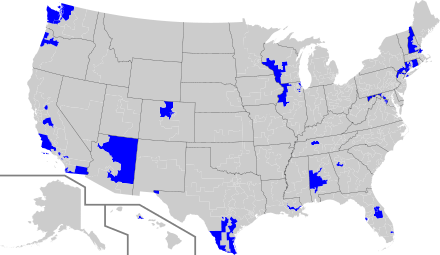
.jpg)
